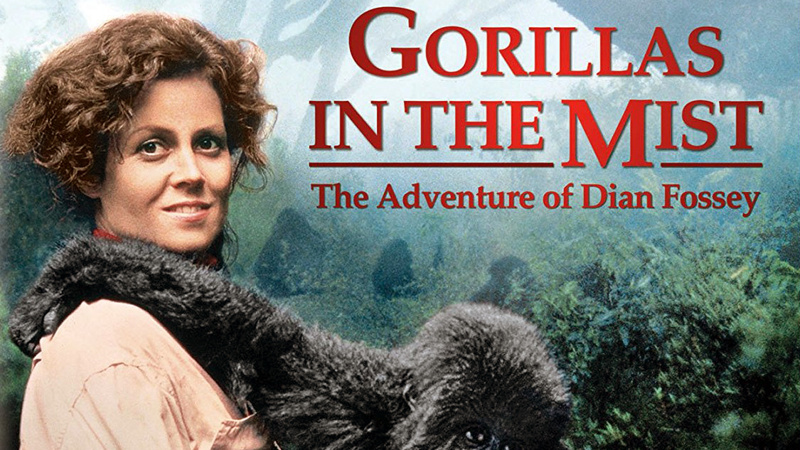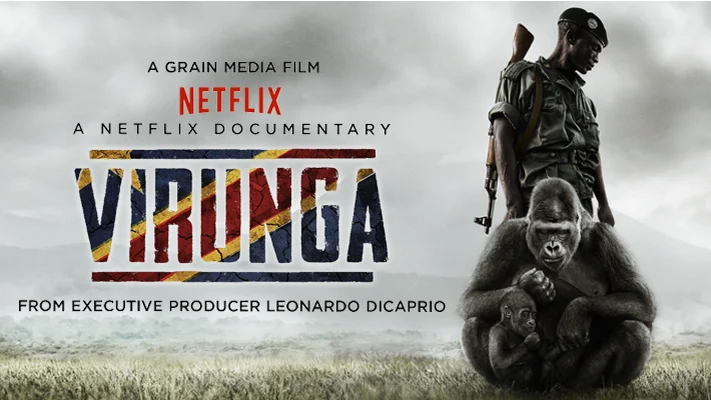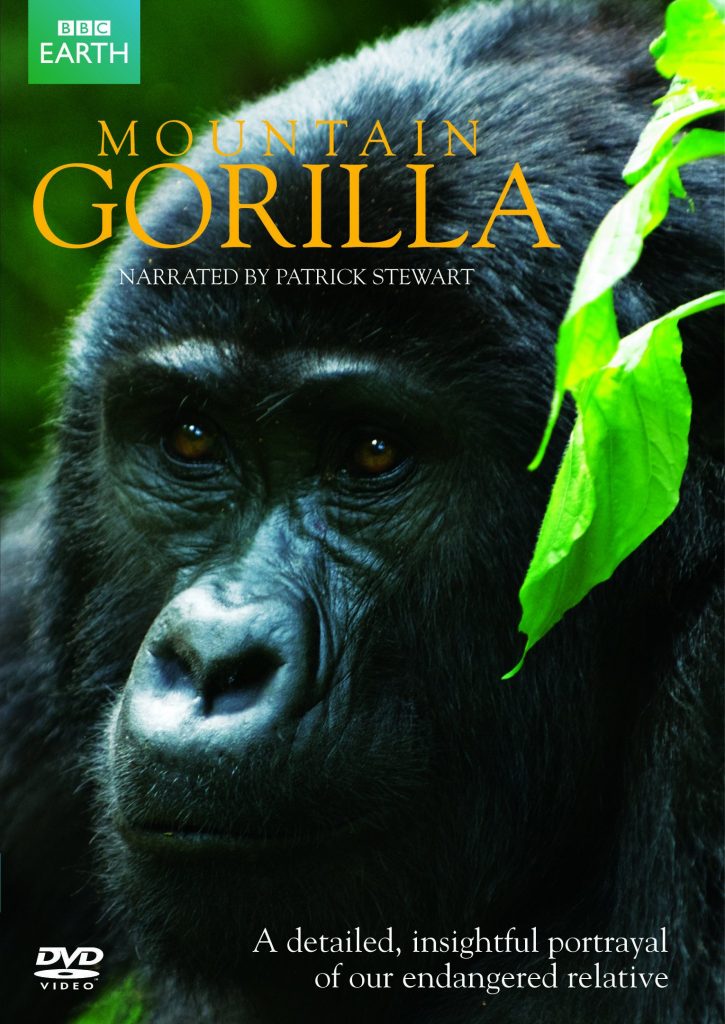Rwanda’s mountain gorillas have long captured global scientific and conservation interest. In the past four decades, film and documentary media have shaped public perception of these great apes more than any other medium.
Much of this awareness began in the late 1970s, following increased international attention on Dian Fossey’s pioneering research in the Virunga Massif.
Since then, mountain gorilla documentaries have become critical tools for education, conservation, fundraising, political lobbying, and eco-tourism development.
Several acclaimed productions, ranging from dramatised biopics to investigative environmental journalism, have featured Rwanda’s gorillas.
These films provide visual access to species that are difficult to study and expensive to reach. For the eco-conscious tourist or conservation advocate, they offer insight into the challenges of habitat protection, human-wildlife interaction, and long-term sustainability.
Many tour operators, researchers, and schools still use them today as preparatory or advocacy material.
If you’re planning to visit Volcanoes National Park or simply want to understand what makes mountain gorilla conservation so globally relevant, this article highlights the most influential documentaries made about Rwanda’s mountain gorillas.
The Role of Documentaries in Mountain Gorilla Conservation
Mountain gorilla documentaries have played a decisive role in shaping global understanding of mountain gorillas. Their footage often reaches people who will never visit Africa in person.
In Rwanda’s case, visual storytelling has done more than raise awareness.
It has influenced policy shifts, directed donor funding, and strengthened support for protected areas like Volcanoes National Park.
The earliest notable surge in attention followed the global broadcast of Dian Fossey’s work in the late 1970s and early 1980s.
This period coincided with the international expansion of wildlife television programming.
Moreover, the release of “Gorillas in the Mist” in 1988 added a dramatised—but widely watched—portrait of Fossey’s life and the mountain gorilla’s plight. The resulting attention led to expanded conservation partnerships and tourism interest.
On top of that, film crews often collaborate with local park authorities and veterinarians, documenting real-time interventions.
These behind-the-scenes portrayals help illustrate the complexity and cost of protecting a species with fewer than 1,100 individuals remaining globally.
Besides inspiring empathy, these documentaries create archival records of mountain gorilla behaviour, habitat changes, and poaching threats over time.
They serve as visual data points for both advocacy and scientific reflection.
You may find that several Rwandan conservation NGOs still use selected scenes from such documentaries in community education sessions or donor presentations regarding mountain gorillas.
1. Dian Fossey and Gorillas in the Mist (1988)
Dian Fossey began working in Rwanda’s Volcanoes National Park in 1967. She founded the Karisoke Research Centre between Mount Karisimbi and Mount Bisoke to study mountain gorillas.
Her research focused on wild behavioural observation, family dynamics, and poaching deterrence. The mountain gorilla subspecies she studied, Gorilla beringei beringei, was critically endangered at the time.
Fossey’s work spanned 18 years and produced landmark findings that redefined how primatologists and conservationists approached great ape studies. By the time of her death in 1985, she had habituated multiple gorilla families for close observation.

Film Production and Release
Gorillas in the Mist was released by Universal Pictures in September 1988. Directed by Michael Apted, the film was adapted from Fossey’s memoir published in 1983.
It starred Sigourney Weaver as Fossey. The actress trained on location in Rwanda and filmed scenes with real habituated gorillas under professional guidance.
The crew shot extensively in and around Volcanoes National Park, using actual conservation sites. This helped preserve the visual integrity of the story while giving audiences an accurate sense of the environment.
The film earned five Academy Award nominations, including Best Actress and Best Adapted Screenplay. Weaver won a Golden Globe for her performance.
Impact on Public Awareness and Policy
The film introduced millions of viewers to the gorilla conservation crisis. It portrayed the threats of habitat loss, poaching, and illegal animal trafficking in visceral detail.
Besides raising public empathy, it helped shape donor behaviour. Conservation organisations experienced increased inquiries, while media outlets began to spotlight Rwanda’s conservation strategy more frequently.
On top of that, several Western universities incorporated the film into primate ecology and environmental studies curricula. Some still do.
Influence on Rwanda’s Gorilla Tourism
Gorillas in the Mist played a significant role in shaping early interest in gorilla trekking. Within one year of the film’s release, inquiries to Rwanda’s tourism offices increased.
Tour operators began marketing Volcanoes National Park alongside the film’s story. This formed part of the initial strategy that positioned Rwanda as a conservation-led tourism destination.
By the early 1990s, gorilla trekking permits were funding ranger patrols, research logistics, and local veterinary programs. The economic feedback loop that now supports the park partially traces back to this period.
If you’re planning a visit, watching this documentary offers historical grounding. And even if you’ve seen it before, viewing it again may reveal just how much has changed—and what hasn’t.
2. Virunga (2014): A Documentary About the Struggle to Protect Gorillas
Virunga (2014) is one of the few investigative mountain gorilla documentaries set primarily in the Democratic Republic of Congo, within Virunga National Park. However, it holds direct ecological relevance to Rwanda.
The park is part of the broader Virunga Massif, a transboundary ecosystem shared by Rwanda, Uganda, and the DRC. Mountain gorillas frequently cross between borders within this contiguous habitat.
Directed by Orlando von Einsiedel and produced by Leonardo DiCaprio, the film highlights the entangled relationship between armed conflict, corporate exploitation, and conservation.
Its backdrop includes the civil war in eastern Congo, the presence of SOCO International (a British oil company), and the lives of rangers protecting critically endangered gorillas.

Although Rwanda is not its main stage, the documentary reflects the wider security dynamics affecting the entire Virunga ecosystem, including Volcanoes National Park.
Conservation Amid War and Oil Exploration
The film documents how conservation becomes a frontline activity in conflict areas. Rangers stationed at Virunga risk their lives daily, not only from poachers but from militia groups and political instability.
SOCO International sought oil exploration rights inside the park. This move violated Congolese law and UNESCO protections. The documentary exposes covert negotiations, armed intimidation, and corruption.
Park rangers, led by Director Emmanuel de Merode, resist the pressures. De Merode himself survived an assassination attempt in April 2014 while returning from a meeting with prosecutors.
Besides spotlighting gorilla protection, Virunga presents environmental justice as a broader political issue. The link between resource exploitation and biodiversity loss is sharply articulated.
Viewers come away with a deeper sense of the geopolitical weight behind conservation policy in Central Africa.
Recognition, Influence, and Policy Outcomes
Virunga premiered at the Tribeca Film Festival in April 2014. It was later acquired by Netflix and released globally in November that year.
The film received an Academy Award nomination for Best Documentary Feature. It also won a Peabody Award and received praise from environmental activists, journalists, and policymakers.
More importantly, it triggered international scrutiny of SOCO’s operations. By 2015, following global pressure, SOCO agreed to withdraw from Virunga National Park.
On top of that, the film inspired the Virunga Alliance, a regional initiative uniting conservation with local economic development. Rwanda is a participating partner in cross-border tourism strategies shaped by this momentum.
If you’re seeking to understand the real-world risks involved in wildlife protection, this film presents a clear-eyed look, raw, urgent, and sometimes uncomfortable.
Where It Connects with Rwanda’s Gorillas
Rwanda shares not only the gorilla population but also conservation frameworks with Virunga. Mountain gorillas move freely between Volcanoes National Park and their Congolese range.
Joint patrols, research efforts, and vet teams operate under a regional framework involving Rwanda, Uganda, and the DRC. The Greater Virunga Transboundary Collaboration (GVTC) oversees this coordination.
Watching Virunga helps contextualise the broader ecosystem challenges. The survival of Rwanda’s gorillas is linked to what happens across the border.
3. BBC’s Mountain Gorilla Series (2010)
The BBC’s Mountain Gorilla was a two-part series first aired in 2010. It offered unprecedented access to gorilla families in Rwanda and Uganda over several months.
Filmed primarily in Volcanoes National Park and Bwindi Impenetrable National Park, the production focused on habituated gorilla groups monitored daily by conservationists and field researchers.
Each episode captured routine gorilla life with minimal interference. The filming team worked alongside the Rwanda Development Board, the Dian Fossey Gorilla Fund, and the Mountain Gorilla Veterinary Project.
A critical feature of this series was its proximity. Using long lenses, silent drones, and infrared cameras, the team recorded behaviour rarely seen by tourists or even field guides.

Besides showcasing maternal care, dominance shifts, and foraging, the crew documented veterinary interventions for snare wounds and respiratory infections. These scenes reveal how conservation depends on precise, daily human engagement.
Production Method and Scientific Accuracy
Filming required extensive permissions and environmental protocols. Every camera crew member was accompanied by a gorilla vet, ranger, or ecologist to ensure zero disruption.
The narration, delivered with quiet restraint, avoided sensationalism. It allowed the footage to speak for itself, a deliberate departure from typical wildlife programming styles.
Moreover, behavioural insights came directly from field researchers. The show featured interviews with trackers and primatologists who had followed specific gorillas for over ten years.
This integration of science, logistics gave audiences a technical view of gorilla conservation as a system: structured, monitored, and constantly at risk.
Broadcast Reach and Institutional Use
Mountain Gorilla aired globally through the BBC and affiliated broadcasters. It was rebroadcast by PBS in the United States under the Nature series and translated into multiple languages for international education.
Universities, conservation NGOs, and tourism training institutions have since adopted the footage in their teaching materials. In Rwanda, some tour operators still recommend the series to clients preparing for gorilla treks.
Documenting a Shared Regional Commitment
Although the program did not focus exclusively on Rwanda, the shared ecological region was central to the series. Many of the gorillas featured crossed back and forth between Rwanda and Uganda.
The series quietly underscored the success of long-term habituation programs, ranger continuity, and multi-country conservation efforts. Without coordinated regional protection, the scenes captured would not have been possible.
You’ll likely notice familiar group names if you visit Volcanoes National Park today. Several gorillas shown in the documentary are still monitored.
Conclusion: Why These Films Matter for Future Conservation
Mountain Gorilla documentaries function as long-term advocacy instruments. For species like Rwanda’s mountain gorillas, consistent visual presence supports both ecological funding and international policy momentum.
In this context, films help sustain public focus across donor agencies, conservation boards, and eco-regional tourism structures. Visibility affects budgets. And budgets affect whether field patrols happen on time.
Besides sustained attention, documentary content reinforces conservation planning. In Rwanda, several protected area policies reference public media when justifying new ranger posts, boundary assessments, or veterinary extensions.
Moreover, these mountain gorilla documentaries translate raw field data into forms that influence audiences outside scientific or government circles. A filmed snare removal, when shown correctly, builds more support than a bar graph.
On top of that, filmmakers often work in tandem with field researchers. Their footage can highlight early threats: changes in foraging behaviour, troop movement, and forest pressure.
Some organisations, including Gorilla Doctors and the Dian Fossey Gorilla Fund, integrate edited film segments into orientation briefings for partners, interns, and local enforcement teams. It standardises understanding.
Documentary media also provides continuity. Over time, these films become references; what equipment was used, which protocols were in place, and how individual gorillas behaved under specific conditions.
If you’re connected to conservation work, whether as a funder or planner, reviewing these documentaries can sharpen your situational knowledge on the mountain gorilla. The camera lens sometimes sees what reports omit.
They are part of a conservation infrastructure that connects government, tourism, science, and community-led projects through consistent visual documentation.
